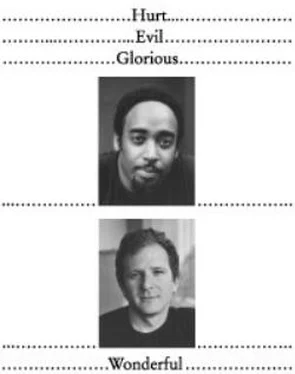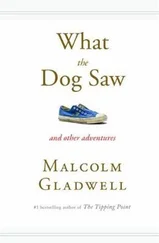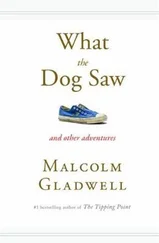Malcolm Gladwell - Blink - The Power of Thinking Without Thinking
Здесь есть возможность читать онлайн «Malcolm Gladwell - Blink - The Power of Thinking Without Thinking» весь текст электронной книги совершенно бесплатно (целиком полную версию без сокращений). В некоторых случаях можно слушать аудио, скачать через торрент в формате fb2 и присутствует краткое содержание. Жанр: Культурология, Психология, на английском языке. Описание произведения, (предисловие) а так же отзывы посетителей доступны на портале библиотеки ЛибКат.
- Название:Blink: The Power of Thinking Without Thinking
- Автор:
- Жанр:
- Год:неизвестен
- ISBN:нет данных
- Рейтинг книги:3 / 5. Голосов: 1
-
Избранное:Добавить в избранное
- Отзывы:
-
Ваша оценка:
- 60
- 1
- 2
- 3
- 4
- 5
Blink: The Power of Thinking Without Thinking: краткое содержание, описание и аннотация
Предлагаем к чтению аннотацию, описание, краткое содержание или предисловие (зависит от того, что написал сам автор книги «Blink: The Power of Thinking Without Thinking»). Если вы не нашли необходимую информацию о книге — напишите в комментариях, мы постараемся отыскать её.
Blink: The Power of Thinking Without Thinking — читать онлайн бесплатно полную книгу (весь текст) целиком
Ниже представлен текст книги, разбитый по страницам. Система сохранения места последней прочитанной страницы, позволяет с удобством читать онлайн бесплатно книгу «Blink: The Power of Thinking Without Thinking», без необходимости каждый раз заново искать на чём Вы остановились. Поставьте закладку, и сможете в любой момент перейти на страницу, на которой закончили чтение.
Интервал:
Закладка:
On the issue of malpractice lawsuits and physicians, see an interview with Jeffrey Allen and Alice Burkin by Berkeley Rice: “How Plaintiffs’ Lawyers Pick Their Targets,” Medical Economics (April 24, 2000); Wendy Levinson et al., “Physician-Patient Communication: The Relationship with Malpractice Claims Among Primary Care Physicians and Surgeons,” Journal of the American Medical Association 277, no. 7 (1997): 553-559; and
Nalini Ambady et al., “Surgeons’ Tone of Voice: A Clue to Malpractice History,” Surgery 132, no. 1 (2002): 5-9.
For Hoving on Berenson etc., see False Impressions: The Hunt for Big Time Art Fakes (London: Andre Deutsch, 1996), 19-20.
On the scrambled-sentence test, see Thomas K. Srull and Robert S. Wyer, “The Role of Category Accessibility in the Interpretation of Information About Persons: Some Determinants and Implications,” Journal of Personality and Social Psychology 37 (1979): 1660-1672.
John Bargh’s fascinating research can be found in John A. Bargh, Mark Chen, and Lara Burrows, “Automaticity of Social Behavior: Direct Effects of Trait Construct and Stereotype Activation on Action,” Journal of Personality and Social Psychology 71, no. 2 (1996): 230-244.
On the Trivial Pursuit study, see Ap Dijksterhuis and Ad van Knippenberg, “The Relation Between Perception and Behavior, or How to Win a Game of Trivial Pursuit,” Journal of Personality and Social Psychology 74, no. 4 (1998): 865-877.
The study on black and white test performance and race priming is presented in Claude Steele and Joshua Aronson’s “Stereotype Threat and Intellectual Test Performance of African Americans,” Journal of Personality and Social Psychology 69, no. 5 (1995): 797-811.
The gambling studies are included in Antonio Damasio’s wonderful book Descartes’ Error: Emotion, Reason, and the Human Brain (New York: HarperCollins, 1994), 193.
The human need to explain the inexplicable was described, most famously, by Richard Nisbett and Timothy Wilson in the 1970s. They concluded: “It is naturally preferable, from the standpoint of prediction and subjective feelings of control, to believe that we have such access. It is frightening to believe that no one has no more certain knowledge of the workings of one’s own mind than would an outsider with intimate knowledge of one’s history and of the stimuli present at the time the cognitive process occurred.” See Richard E. Nisbett and Timothy D. Wilson, “Telling More Than We Can Know: Verbal Reports on Mental Processes,” Psychological Review 84, no. 3 (1977): 231-259.
On the swinging rope experiment, see Norman R. F. Maier. “Reasoning in Humans: II. The Solution of a Problem and Its Appearance in Consciousness,” Journal of Comparative Psychology 12 (1931): 181-194.
There are many excellent books on Warren Harding, including the following: Francis Russell, The Shadow of Blooming Grove: Warren G. Harding in His Times (New York: McGraw-Hill, 1968); Mark Sullivan, Our Times: The United States 1900-1925, vol. 6, The Twenties (New York: Charles Scribner’s Sons, 1935), 16; Harry M. Daugherty, The Inside Story of the Harding Tragedy (New York: Ayer, 1960); and Andrew Sinclair, The Available Man: The Life Behind the Masks of Warren Gamaliel Harding (New York: Macmillan, 1965).
For more on the IAT, see Anthony G. Greenwald, Debbie E. McGhee, and Jordan L. K. Schwartz, “Measuring Individual Differences in Implicit Cognition: The Implicit Association Test,” Journal of Personality and Social Psychology 74, no. 6 (1998): 1464-1480.
For an excellent treatment of the height issue, see Nancy Etcoff, Survival of the Prettiest: The Science of Beauty (New York: Random House, 1999), 172.
The height-salary study can be found in Timothy A. Judge and Daniel M. Cable, “The Effect of Physical Height on Workplace Success and Income: Preliminary Test of a Theoretical Model,” Journal of Applied Psychology 89, no. 3 (June 2004): 428-441.
A description of the Chicago car dealerships study is found in Ian Ayres, Pervasive Prejudice? Unconventional Evidence of Race and Gender Discrimination (Chicago: University of Chicago Press, 2001).
For proof that you can combat prejudice, see Nilanjana Dasgupta and Anthony G. Greenwald, “On the Malleability of Automatic Attitudes: Combating Automatic Prejudice with Images of Admired and Disliked Individuals,” Journal of Personality and Social Psychology 81, no. 5 (2001): 800-814. A number of other studies have shown similar effects. Among them: Irene V. Blair et al., “Imagining Stereotypes Away: The Moderation of Implicit Stereotypes Through Mental Imagery,” Journal of Personality and Social Psychology 81, no. 5 (2001): 828-841; and Brian S. Lowery and Curtis D. Hardin, “Social Influence Effects on Automatic Racial Prejudice,” Journal of Personality and Social Psychology 81, no. 5 (2001): 842-855.
A good account of Blue Team’s philosophy toward war fighting can be found in William A. Owens, Lifting the Fog of War (New York: Farrar, Straus, 2000), 11.
Klein’s classic work on decision making is Sources of Power (Cambridge, Mass.: MIT Press, 1998).
On the rules of improv, see Keith Johnstone, Impro: Improvisation and the Theatre (New York: Theatre Arts Books, 1979).
On logic puzzles, see Chad S. Dodson, Marcia K. Johnson, and Jonathan W. Schooler, “The Verbal Overshadowing Effect: Why Descriptions Impair Face Recognition,” Memory & Cognition 25, no. 2 (1997): 129-139.
On verbal overshadowing, see Jonathan W. Schooler, Stellan Ohlsson, and Kevin Brooks, “Thoughts Beyond Words: When Language Overshadows Insight,” Journal of Experimental Psychology 122, no. 2 (1993): 166-183.
The firefighter story and others are discussed in “The Power of Intuition,” chap. 4 in Gary Klein’s Sources of Power (Cambridge, Mass.: MIT Press, 1998).
For Reilly’s research, see Brendan M. Reilly, Arthur T. Evans, Jeffrey J. Schaider, and Yue Wang, “Triage of Patients with Chest Pain in the Emergency Department: A Comparative Study of Physicians’ Decisions,” American Journal of Medicine 112 (2002): 95-103; and Brendan Reilly et al., “Impact of a Clinical Decision Rule on Hospital Triage of Patients with Suspected Acute Cardiac Ischemia in the Emergency Department,” Journal of the American Medical Association 288 (2002): 342-350.
Goldman has written several papers on his algorithm. Among them are Lee Goldman et al., “A Computer-Derived Protocol to Aid in the Diagnosis of Emergency Room Patients with Acute Chest Pain,” New England Journal of Medicine 307, no. 10 (1982): 588-596; and Lee Goldman et al., “Prediction of the Need for Intensive Care in Patients Who Come to Emergency Departments with Acute Chest Pain,” New England Journal of Medicine 334, no. 23 (1996): 1498-1504.
On the consideration of gender and race, see Kevin Schulman et al., “Effect of Race and Sex on Physicians’ Recommendations for Cardiac Catheterization,” New England Journal of Medicine 340, no. 8 (1999): 618-626.
Oskamp’s famous study is described in Stuart Oskamp, “Overconfidence in Case Study Judgments,” Journal of Consulting Psychology 29, no. 3 (1965): 261-265.
A lot has been written about the changing music industry. This article was helpful: Laura M. Holson, “With By-the-Numbers Radio, Requests Are a Dying Breed,” New York Times, July 11, 2002.
Читать дальшеИнтервал:
Закладка:
Похожие книги на «Blink: The Power of Thinking Without Thinking»
Представляем Вашему вниманию похожие книги на «Blink: The Power of Thinking Without Thinking» списком для выбора. Мы отобрали схожую по названию и смыслу литературу в надежде предоставить читателям больше вариантов отыскать новые, интересные, ещё непрочитанные произведения.
Обсуждение, отзывы о книге «Blink: The Power of Thinking Without Thinking» и просто собственные мнения читателей. Оставьте ваши комментарии, напишите, что Вы думаете о произведении, его смысле или главных героях. Укажите что конкретно понравилось, а что нет, и почему Вы так считаете.












